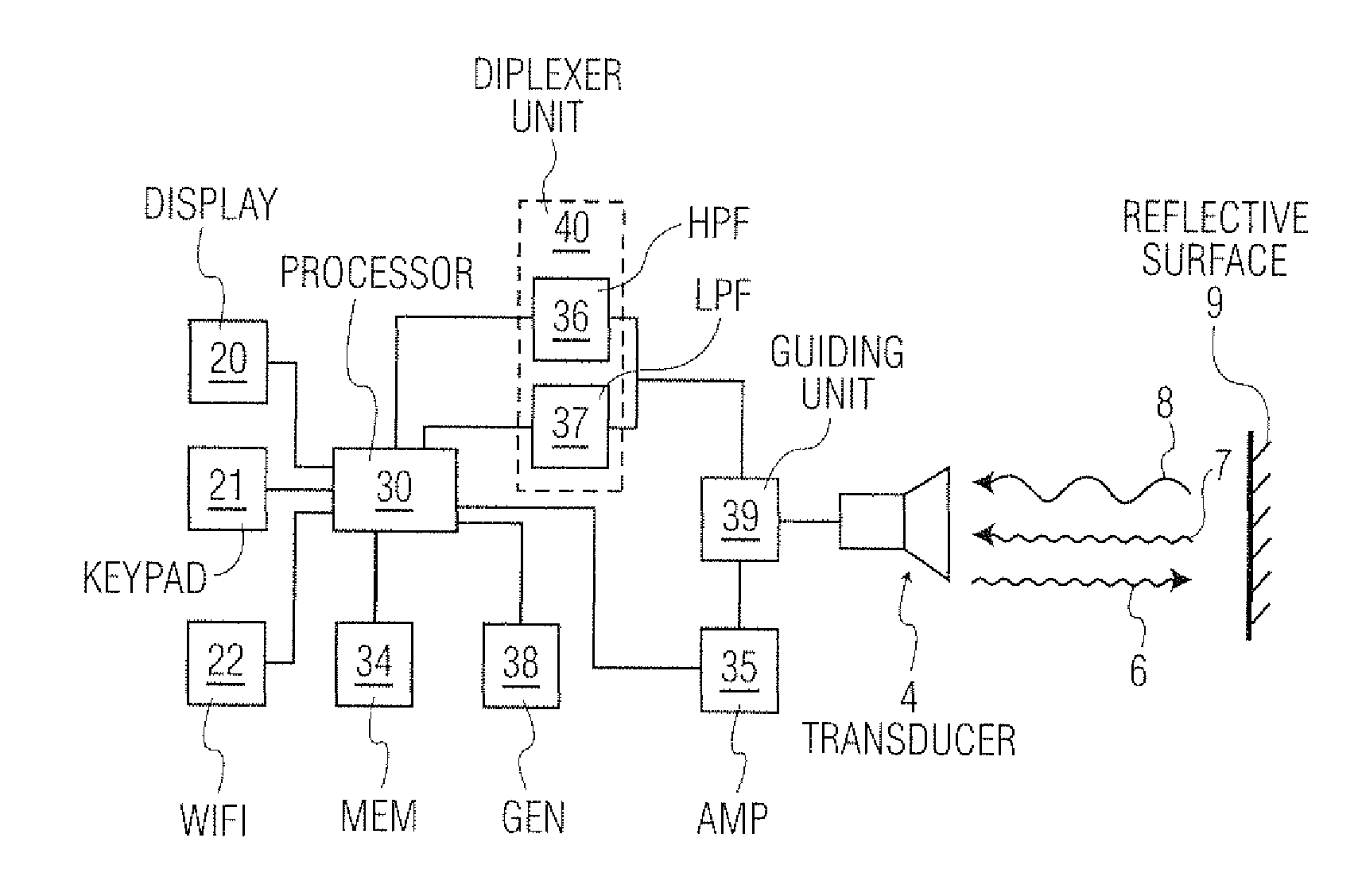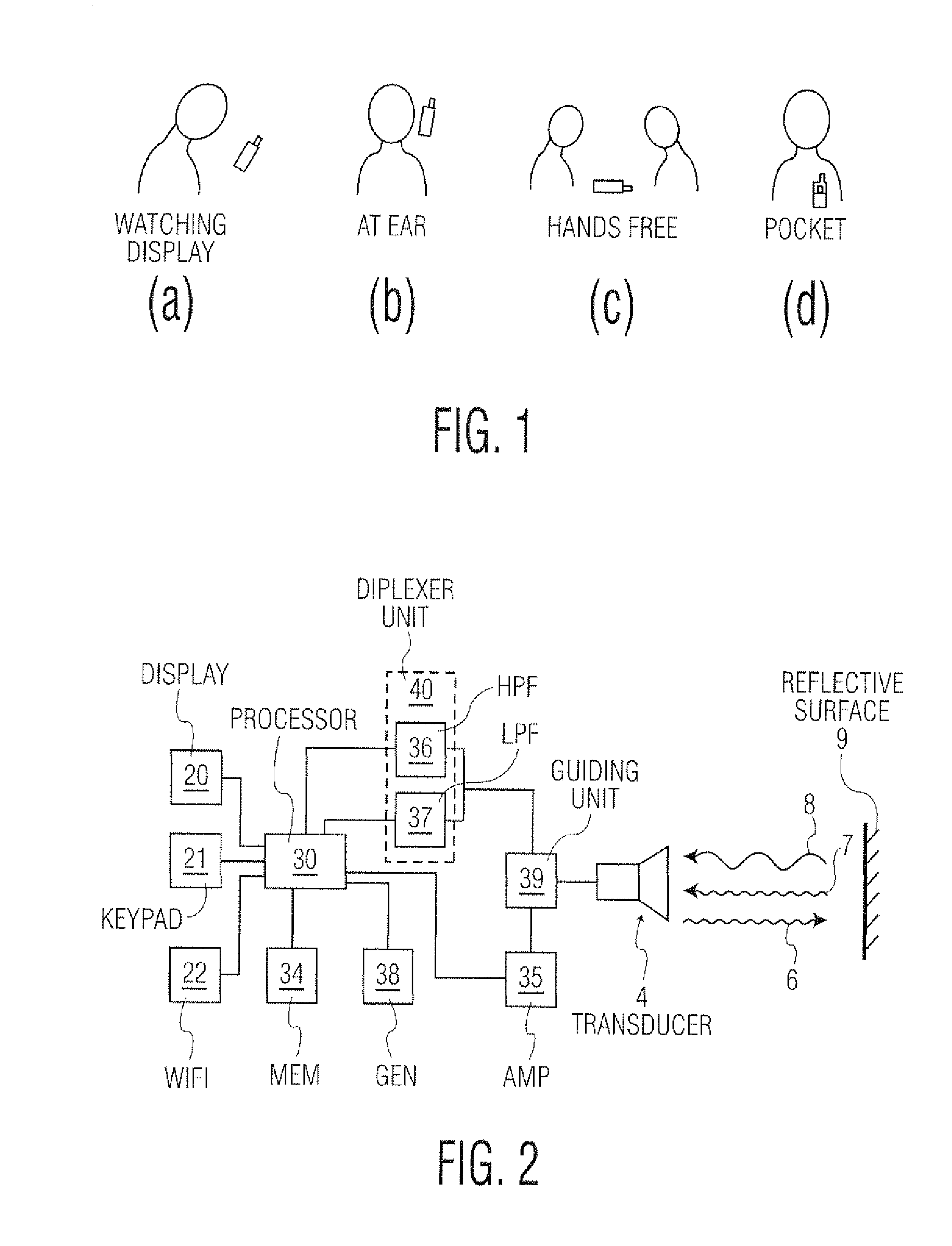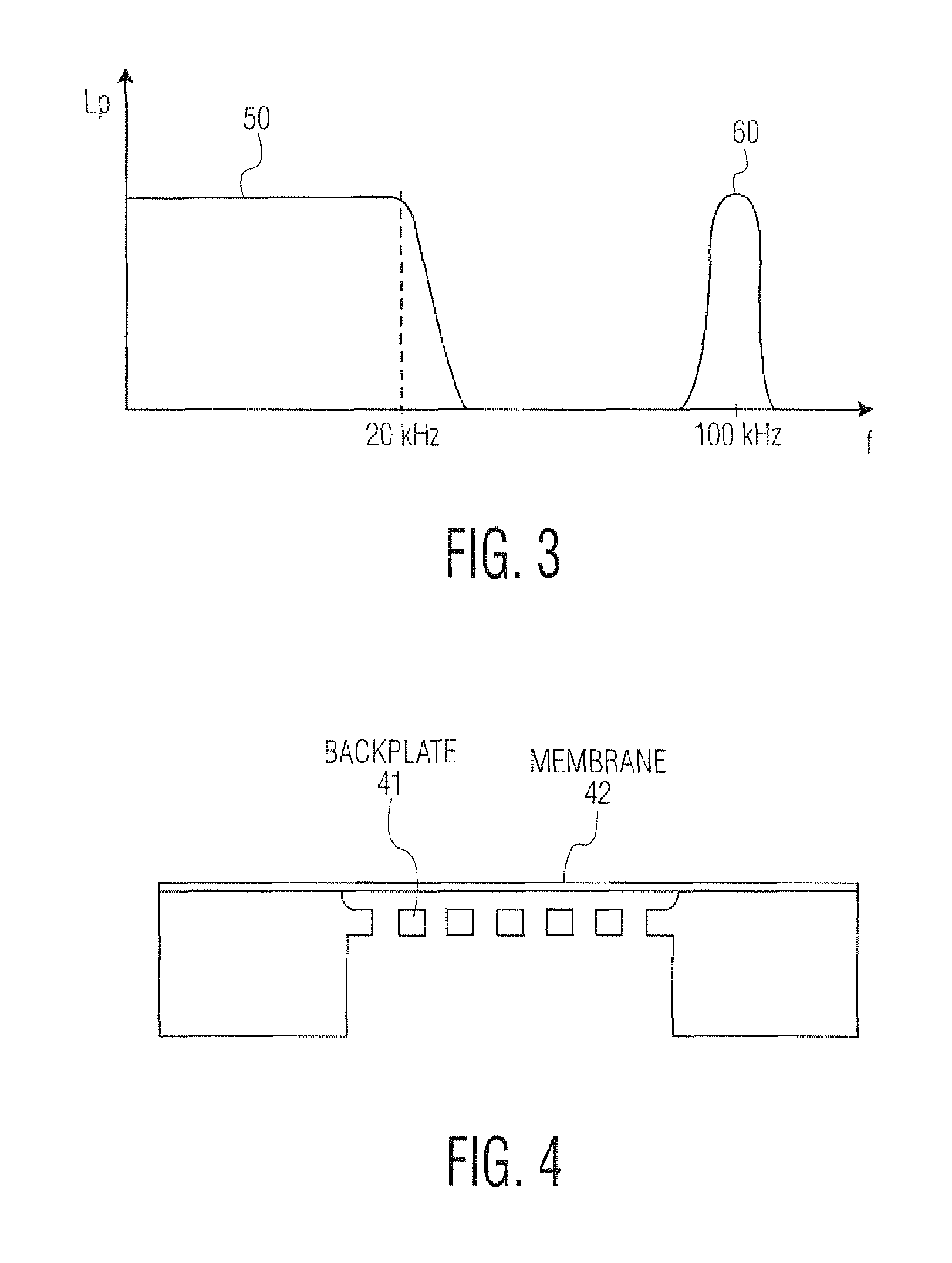Proximity sensor, in particular microphone for reception of sound signals in the human audible sound range, with ultrasonic proximity estimation
a proximity sensor and microphone technology, applied in the field of proximity sensors, can solve the problems of lowering the sales margin of such devices, neither the proximity sensor nor the gravitational force sensor is capable of detection, etc., and achieves the effects of reducing hardware complexity, reducing the resonance frequency, and reducing the installation space and manufacturing steps
- Summary
- Abstract
- Description
- Claims
- Application Information
AI Technical Summary
Benefits of technology
Problems solved by technology
Method used
Image
Examples
Embodiment Construction
[0058]Now reference is made to FIG. 2, which shows a block diagram of the basic elements of a proximity sensor according to one aspect of the present solution. A signal generator 38 provides a signal in the ultrasonic sound range, preferably a burst, to processor 30. If processor 30 decides to initiate the proximity estimation step, it passes the received ultrasonic signal burst from signal generator 38 to power amplifier 35. Power amplifier 35 passes the ultrasonic signal burst to guiding unit 39, which guides the signal to the acoustic transducer 4. Guiding unit 39 may comprise a hybrid termination circuit or other appropriate means to alternating use acoustic transducer 4 as an emitter (actuator) in one moment and as a receiver (sensor) in another moment. Acoustic transducer 4 emits ultrasonic signal 6 and in case ultrasonic signal 6 impinges a reflective surface 9, reflected ultrasonic signal 7 again impinges on acoustic transducer 4.
[0059]Along with reflected ultrasonic signal ...
PUM
 Login to View More
Login to View More Abstract
Description
Claims
Application Information
 Login to View More
Login to View More - R&D
- Intellectual Property
- Life Sciences
- Materials
- Tech Scout
- Unparalleled Data Quality
- Higher Quality Content
- 60% Fewer Hallucinations
Browse by: Latest US Patents, China's latest patents, Technical Efficacy Thesaurus, Application Domain, Technology Topic, Popular Technical Reports.
© 2025 PatSnap. All rights reserved.Legal|Privacy policy|Modern Slavery Act Transparency Statement|Sitemap|About US| Contact US: help@patsnap.com



